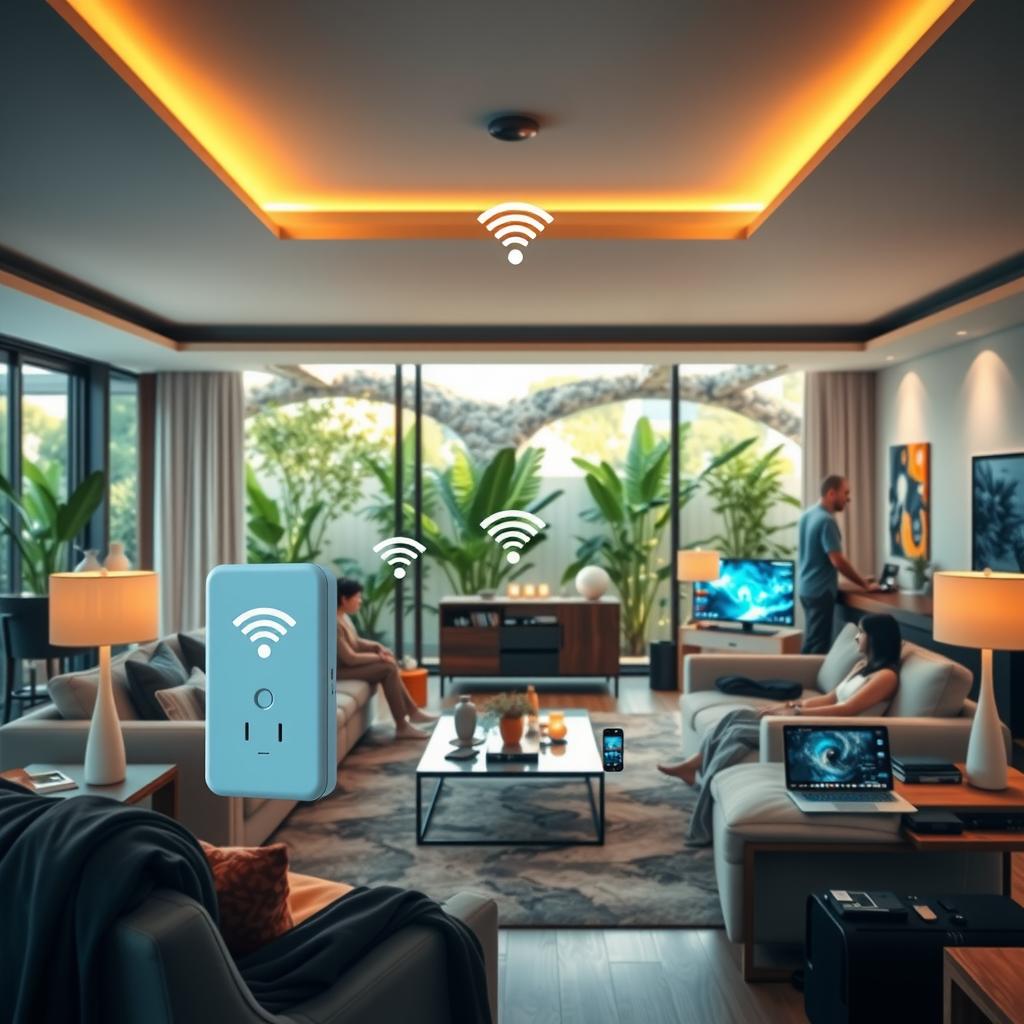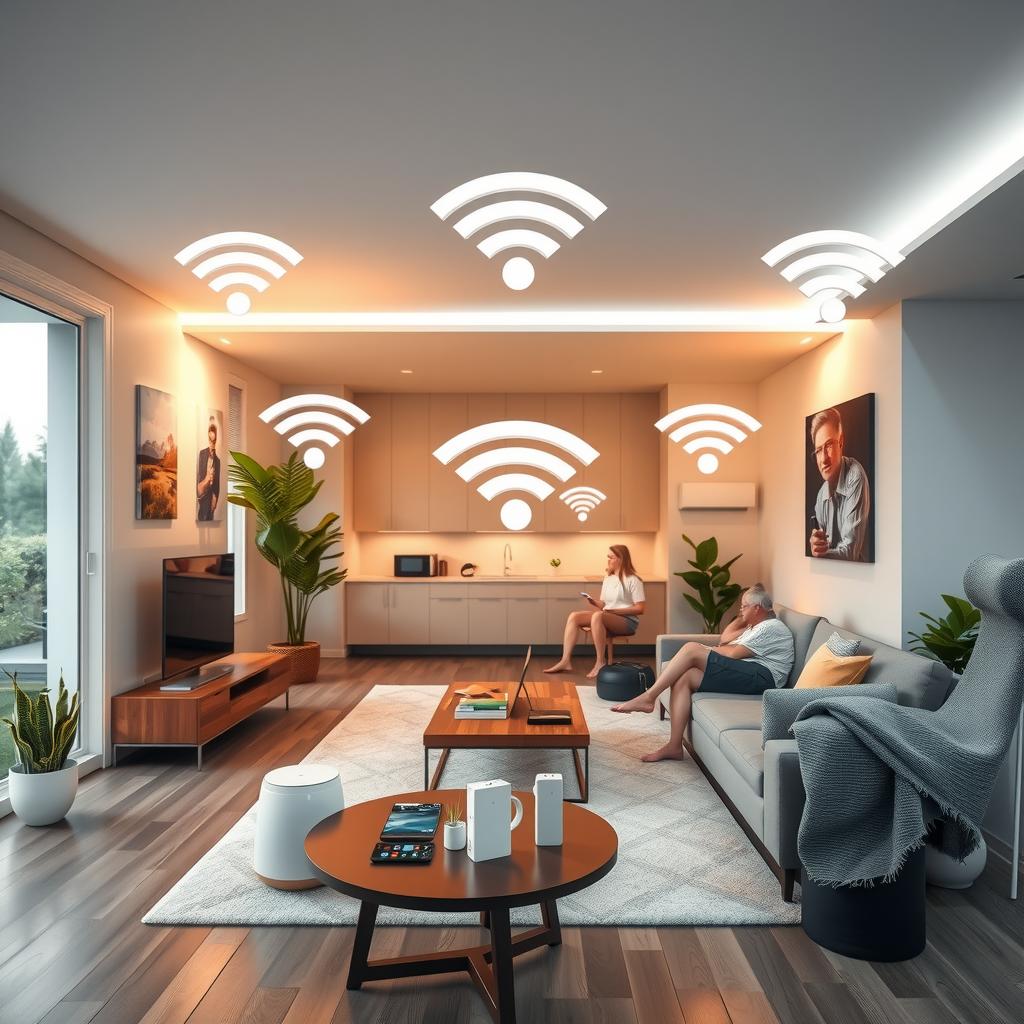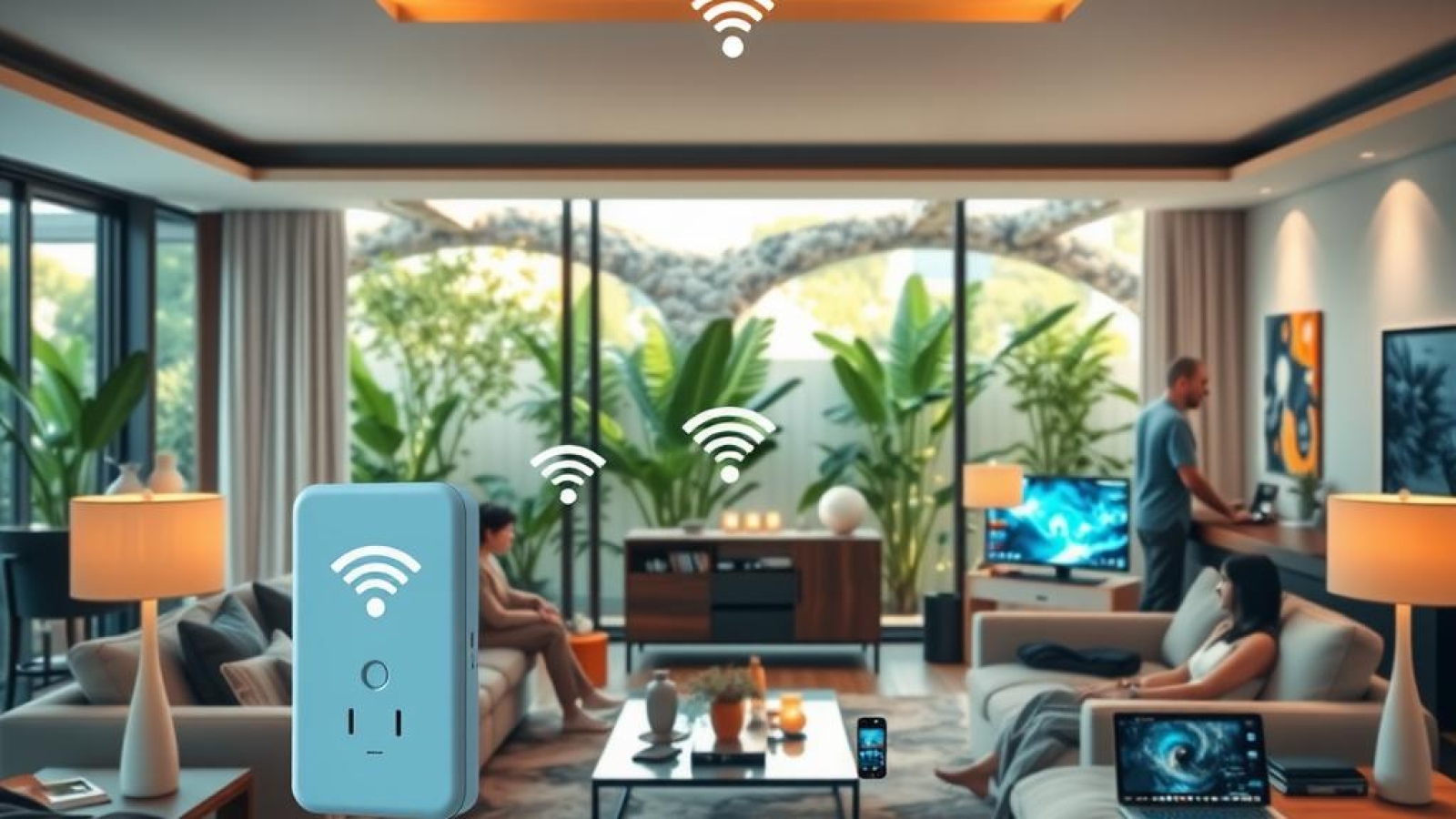In an age where smart homes have become increasingly popular, the reliance on a robust internet connection is more critical than ever. However, many homeowners face WiFi coverage issues that can significantly hinder their experience with connected devices. Whether it’s a dead zone in the corner of the living room or intermittent connectivity in the bedroom, these problems can disrupt daily activities and frustrate users who depend on seamless home connectivity. The reality is that most standard routers struggle to provide adequate signal strength throughout larger spaces or multi-story buildings, leaving many seeking practical solutions to extend their wireless range.
This blog post aims to tackle this pervasive challenge by exploring effective strategies for extending WiFi coverage in smart homes. By understanding various network solutions, readers will be empowered to enhance their internet access and eliminate those pesky blind spots cluttering their living environments. From utilizing modern technology such as extenders and mesh networks to optimizing existing hardware settings, there are numerous options available that cater specifically to enhancing wireless performance.
Furthermore, addressing these common coverage issues not only improves day-to-day activities but also ensures all smart devices—from security cameras to voice assistants—operate at peak efficiency without interruption. As households integrate more connected gadgets into their routines, ensuring consistent signal strength becomes essential for a truly smart home experience.
As we delve deeper into viable solutions for extending WiFi coverage, readers will discover innovative methods tailored for different home layouts and sizes while considering budgetary constraints as well. With each strategy discussed here, homeowners will gain valuable insights aimed at transforming their digital landscapes into efficient hubs of activity—all while maintaining strong connections across every corner of the house. So let’s embark on this journey towards better internet access, discovering how simple adjustments can lead to remarkable improvements in overall connectivity!

Key Points:
-
Enhancing Wireless Range: One of the primary concerns in smart homes is achieving comprehensive WiFi coverage throughout the entire residence. Various strategies can be employed to enhance wireless range, such as strategically placing routers in central locations or utilizing high-gain antennas that can amplify signals. Homeowners can also benefit from using WiFi extenders, which help bridge gaps between the router and devices located further away, effectively minimizing dead zones.
-
Adopting Mesh Networking Systems: Another effective method for boosting home connectivity is implementing a mesh networking system. Unlike traditional routers, mesh networks consist of multiple nodes placed around the home that work together to create a seamless network. This approach not only improves signal strength in hard-to-reach areas but also ensures reliable internet access across all connected devices, making it particularly beneficial for households with numerous smart appliances.
-
Optimizing Network Performance: Beyond expanding coverage, it’s essential to optimize overall network performance. This involves managing bandwidth allocation to prioritize critical applications like streaming services or security systems that require stable connections. Regularly updating router firmware and changing default settings can greatly enhance functionality and address common coverage issues, ensuring residents experience uninterrupted connectivity while navigating their increasingly digital lifestyles.
By understanding these strategies—enhancing wireless range through optimal placement and equipment use, adopting mesh networks for broader reach, and optimizing performance through thoughtful management—smart homeowners can effectively extend their WiFi coverage, creating a robust environment where technology thrives without interruption.

Understanding WiFi Coverage: The Importance of a Strong Connection
Why Adequate WiFi Coverage is Crucial in Smart Homes
In today’s digital age, where smart homes are becoming increasingly common, the significance of adequate WiFi coverage cannot be overstated. A strong and reliable connection is essential for seamlessly integrating various devices—from smart thermostats to security cameras—ensuring that they operate efficiently and effectively. Inadequate connectivity can lead to frustrating experiences; for instance, if a home security system fails to transmit data due to weak signals or intermittent drops in service, homeowners may find themselves vulnerable. Moreover, as more devices connect simultaneously within a household—think smart appliances competing for bandwidth—the potential for coverage issues grows exponentially. This increased demand highlights the importance of extending WiFi range through strategic placement of routers or utilizing network solutions such as extenders or mesh systems.
The impact of poor connectivity extends beyond mere inconvenience; it can disrupt daily activities significantly. For families relying on streaming services for entertainment, buffering episodes during movie night becomes an unwelcome annoyance when signal strength falters at critical moments. Likewise, remote work has become commonplace; thus, employees require uninterrupted internet access to maintain productivity during virtual meetings or collaborative tasks with colleagues around the globe. Failure in these scenarios not only affects individual users but can also have broader implications on business operations.
Furthermore, inadequate home connectivity often leads individuals toward frustration as they grapple with dropped connections while trying to engage with their favorite online content or manage home automation systems effortlessly via mobile apps. As technology continues advancing and dependency on stable internet escalates across all aspects of life—from education and telehealth services to gaming—it becomes clear that investing in robust network infrastructure should be a priority.
To combat these challenges proactively requires understanding one’s personal usage patterns and evaluating existing setups critically; this might involve identifying dead zones within homes where signals diminish drastically before seeking effective ways to enhance performance throughout living spaces comprehensively. Homeowners could benefit from professional assessments that pinpoint specific areas needing improvement while exploring innovative options tailored specifically towards enhancing their unique situations without overspending unnecessarily.
Ultimately, prioritizing strong WiFi coverage is vital not just for functionality but also peace of mind knowing essential functions like security monitoring remain intact even amidst fluctuating demands—a necessity rather than merely an option in our modern lifestyles intertwined deeply with technology’s capabilities!
Enhancing Your Home’s Connectivity: An Overview of Effective Solutions
Practical Methods for Extending WiFi Coverage
In today’s digital age, ensuring robust WiFi coverage throughout a home is essential for seamless internet access across various devices. Many households encounter coverage issues, often resulting from structural barriers or the sheer size of their living space. To tackle these challenges, individuals can consider several effective solutions to extend their WiFi range and improve overall connectivity. One of the most commonly adopted methods is the use of range extenders, which amplify existing signals to reach further into areas where connectivity may be weak or non-existent. These devices work by capturing the signal from a router and rebroadcasting it, thus expanding the network’s reach without requiring additional wiring or complex setups.
Another innovative approach involves implementing mesh networking systems. Unlike traditional routers that broadcast a single signal over a large area, mesh networks consist of multiple nodes placed strategically around the home. This arrangement allows for better distribution of internet signals and helps eliminate dead zones, creating a more consistent online experience across various rooms. Mesh systems are particularly advantageous in larger homes or spaces with numerous walls that can obstruct wireless signals; they provide reliable internet access even in hard-to-reach corners.
Optimal Router Placement: A Key Factor
Positioning Your Router for Maximum Signal Strength
The placement of your router plays an equally critical role in achieving optimal performance when extending WiFi coverage. For instance, positioning the router at an elevated location within central areas can enhance its ability to distribute strong signals throughout different sections of your home effectively. Ideally, users should avoid placing routers near electronic devices that may cause interference—such as microwaves—or behind thick walls made from materials like concrete or metal that could hinder signal strength significantly.
To achieve maximum effectiveness in enhancing connectivity through proper placement strategies, homeowners might experiment with different locations while monitoring changes in network performance using speed tests on connected devices. Additionally, utilizing tools such as mobile applications designed to analyze network strength can help pinpoint ideal spots for installation based on real-time data regarding coverage quality throughout various areas within the house.
The Importance of Smart Home Integration
Leveraging Technology for Improved Network Solutions
As smart homes continue gaining popularity worldwide due to their convenience and efficiency features powered by interconnected devices—smart speakers, security cameras, thermostats—it becomes increasingly important to ensure sufficient wireless range so every component operates optimally without disruptions caused by inadequate connection speeds or dropouts during critical moments when users rely heavily on them daily.
Integrating advanced technologies tailored specifically towards improving household connectivity presents significant advantages worth exploring further than basic measures alone offer today’s consumers looking forward toward long-term solutions addressing present-day demands effectively regardless if they live within small apartments versus sprawling estates alike! By considering options like dual-band routers capable simultaneously transmitting high-frequency bands along with lower ones geared towards legacy products still prevalent among many households today one might easily find themselves achieving lightning-fast streaming experiences alongside smooth gaming sessions even amidst simultaneous device usage occurring concurrently! Thus emphasizing how vital having robust infrastructure established early-on proves essential not just now but well into future advancements anticipated coming down pipeline too soon enough!
Choosing the Right Equipment for Your Smart Home
Finding the Perfect Fit for Your Needs
When setting up a smart home, selecting the right hardware is crucial to ensure a seamless experience. The diverse range of devices available can make this task overwhelming; however, understanding specific requirements can simplify the process significantly. For instance, WiFi coverage plays an essential role in maintaining connectivity across various smart devices. A solid internet connection allows everything from smart thermostats to security cameras to function optimally without interruption. Therefore, assessing your home’s layout and identifying potential coverage issues is key before making any purchases.
To enhance network solutions, one might consider investing in WiFi extenders or mesh systems that improve signal strength throughout larger spaces or homes with multiple floors. These solutions help eliminate dead zones where connectivity might falter, ensuring that every corner of the house enjoys robust internet access. Additionally, it’s essential to keep in mind how many devices will be connected simultaneously; choosing equipment capable of supporting high traffic without sacrificing performance will drastically affect user experience.
Moreover, when evaluating different products for a smart home setup, it is important not just to focus on individual device capabilities but also on how well they integrate within a cohesive ecosystem. Compatibility with existing platforms like Google Assistant or Amazon Alexa can streamline operation and control over all connected gadgets from a single interface—enhancing overall convenience and functionality.
The type of devices selected should reflect personal lifestyle choices as well; families may prioritize safety features like indoor cameras or motion sensors while tech enthusiasts could lean towards automation tools such as smart lighting systems that adapt based on time of day or occupancy patterns. This tailored approach ensures that each piece of hardware complements daily routines effectively.
Lastly, always take into account future upgrades by opting for scalable technology solutions that allow easy additions down the line without requiring significant overhauls of existing setups. By carefully considering these factors—ranging from home connectivity needs to desired functionalities—individuals can create an efficient and enjoyable living space powered by cutting-edge technology designed specifically for their unique environments.
Effective Strategies to Boost WiFi Coverage in Your Smart Home
In today’s digital age, enhancing WiFi coverage has become a priority for many homeowners who rely on their smart devices. To tackle coverage issues effectively, one of the most straightforward methods is to utilize range extenders. These devices capture the existing signal from a router and amplify it, thereby increasing the wireless range throughout the home. This technique is particularly beneficial in larger spaces where dead zones can disrupt connectivity. By strategically placing these extenders in areas that receive some signal but not enough for reliable connections, residents can significantly improve their overall home connectivity.
Another compelling solution involves adopting mesh networking systems. Unlike traditional routers that broadcast a single strong signal from one location, mesh networks consist of multiple nodes placed throughout your residence. Each node communicates with others seamlessly, creating a unified network with enhanced signal strength and reduced dead zones. This configuration allows homeowners to enjoy consistent internet access across all rooms—crucial for maintaining functionality in smart appliances and entertainment systems alike.
Lastly, optimizing router placement can play a pivotal role in extending WiFi coverage effectively. Positioning the router at an elevated location away from walls or obstructions maximizes its performance by ensuring better distribution of signals across various areas of the home. Additionally, aligning it centrally within your living space minimizes distance-related loss of connection quality and enhances overall network performance.
FAQ:
Q: What are some common causes of poor WiFi coverage in smart homes?
A: Common causes include physical obstructions like walls or furniture blocking signals, interference from other electronic devices, outdated equipment not supporting modern standards.
Q: How can I determine if I need a range extender or a mesh system?
A: If you have minor dead zones and want an affordable solution without extensive setup requirements, consider using range extenders; however, if you experience widespread connectivity issues due to size or layout challenges within your home, investing in a mesh system may be more effective.
Q: Will upgrading my internet plan improve my current WiFi situation?
A: Upgrading your internet plan might provide faster speeds; however, if you still face coverage issues, addressing hardware setup such as routers or adding extenders will be essential for maximizing both speed and reliability throughout your smart home environment.

Add a Comment